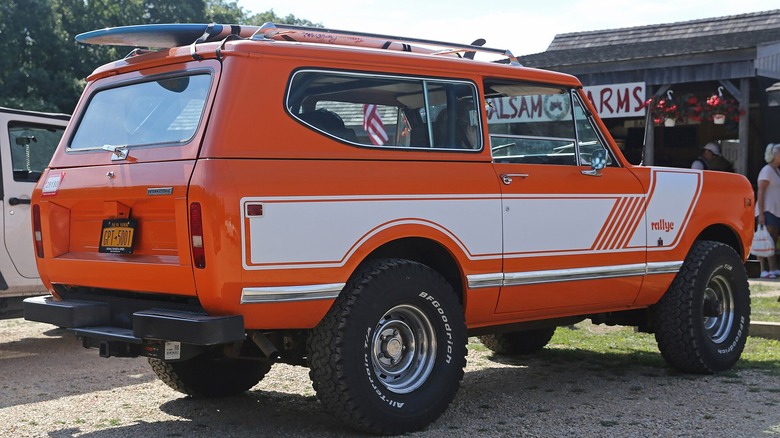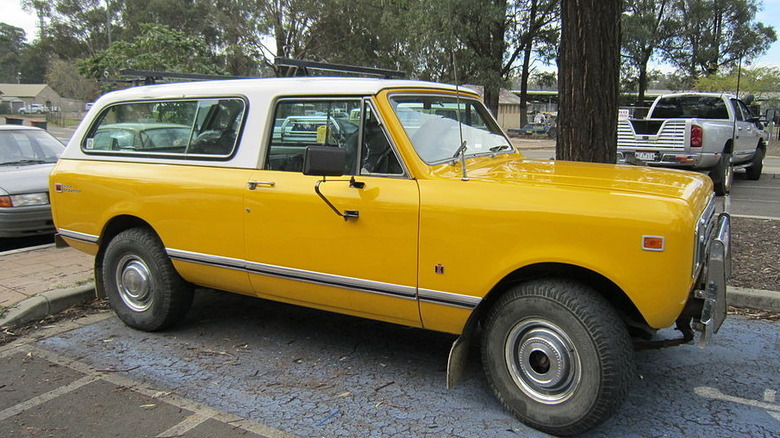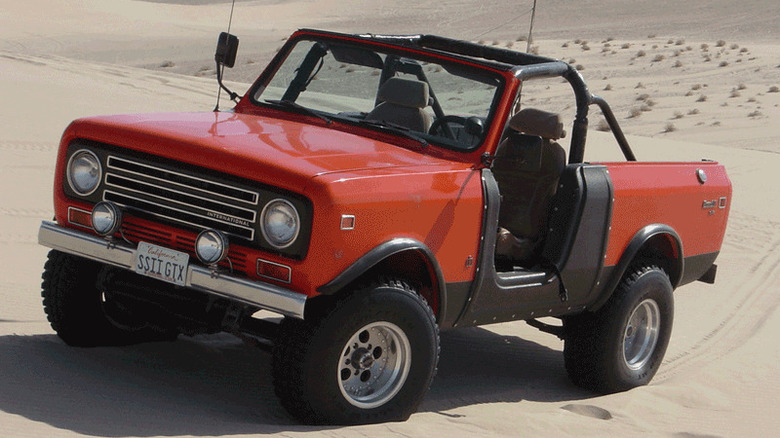The Scout: International Harvester's Classic Adaptive 4x4
The International Harvester Company was an iconic brand for rural America since 1902, when several smaller companies merged to form the conglomerate. Long associated with commercial trucks and farm equipment like tractors, International also dabbled with light trucks, marketing both a pickup and a Chevy Suburban-style vehicle called the Carryall with moderate success. Buoyed by these efforts, International decided to expand into the passenger car arena in the late-1950s with a design called the Scout, an SUV aimed at stealing some sales from Jeep's CJ lineup which had become popular with service members returning from World War II, where these vehicles were used in combat.
Truth be told, International's creation — launched in 1961 and called the Scout 80 — was considerably more practical than the Jeep CJ, mostly owing to its longer wheelbase. Although the 4x4 version is most often remembered, the Scout was available in both two-wheel and four-wheel drive configurations with hard- and soft-top options. Period advertisements touted the Scout as a "Quick-change artist. In minutes you can make the Scout whatever kind of vehicle you want. Weather tight cab top, doors and windows are easy to take off, even the windshield folds down. It's a station wagon, a convertible, a light-duty hauler, a runabout...like having four vehicles for the price of one!"
[Featured image by Mr.choppers via Wikimedia Commons | Cropped and scaled | CC BY-SA 3.0]
The Scout attracted copycats
Although the Scout 80 was tough, sporting a stout ladder-style frame with solid axles perched on leaf springs, it sure wasn't going to win any drag races. The only available engine was a 152 cubic inch four-cylinder, which was basically half of an International 304 cubic inch V8 engine. The so-called "4-152 Commanche" put out a thundering 93 hp until turbocharging brought that figure to 111 hp.
In 1966, International gave the SUV a refresh, dubbing it the Scout 800. Under the hood, a larger four-cylinder engine was made available, followed by a six cylinder and finally, a much-needed V8 was made optional. The Scout 800 era is really when the vehicle started to morph into what we might consider a modern SUV, moving beyond its basic utilitarian roots with such niceties as back seats, carpeting, and an improved heating and ventilation system.
The Scout was a fan favorite and far exceeded International's sales expectations. However, there's an old expression that says "imitation is the highest form of flattery" and before too long, Ford launched its Bronco and Chevy its Blazer, both of which bore more than a passing resemblance to International's Scout.
[Featured image by Jeremy from Sydney, Australia via Wikimedia Commons | Cropped and scaled | CC BY 2.0]
Everything from bare-bones to luxury was available
No longer competing against only Jeep, International upped the ante for 1971 with a more advanced Scout, appropriately named the Scout II. By now, two different V8 engine options were available in addition to the collection of smaller powerplants. Later in the production cycle, a couple of Nissan-supplied diesel engines were offered, which proved popular with buyers around the world.
While the Scout 800 made concessions for consumers demanding more luxuries in their off-road vehicles, the Scout II really catered to this increasing demographic. Two models called the Terra and Traveler were more spacious, featured upscale interiors, and boasted a hatchback.
There was also the off-road offering known as the Super Scout II, which while popular, it wasn't particularly profitable for International. Other potential negative factors included a limited network of dealerships and ad campaigns that neglected female buyers. As such, the Scout II was killed off following the 1980 model year.
Nowadays, the Scout is as desirable as ever with both collector car enthusiasts and off-roaders alike. According to the valuation website classic.com, the typical price over the prior 12 months is approximately $36,000 to $42,000, depending on year and model.
[Featured image by ScoutZilla via Wikimedia Commons | Cropped and scaled | CC BY 1.0]


